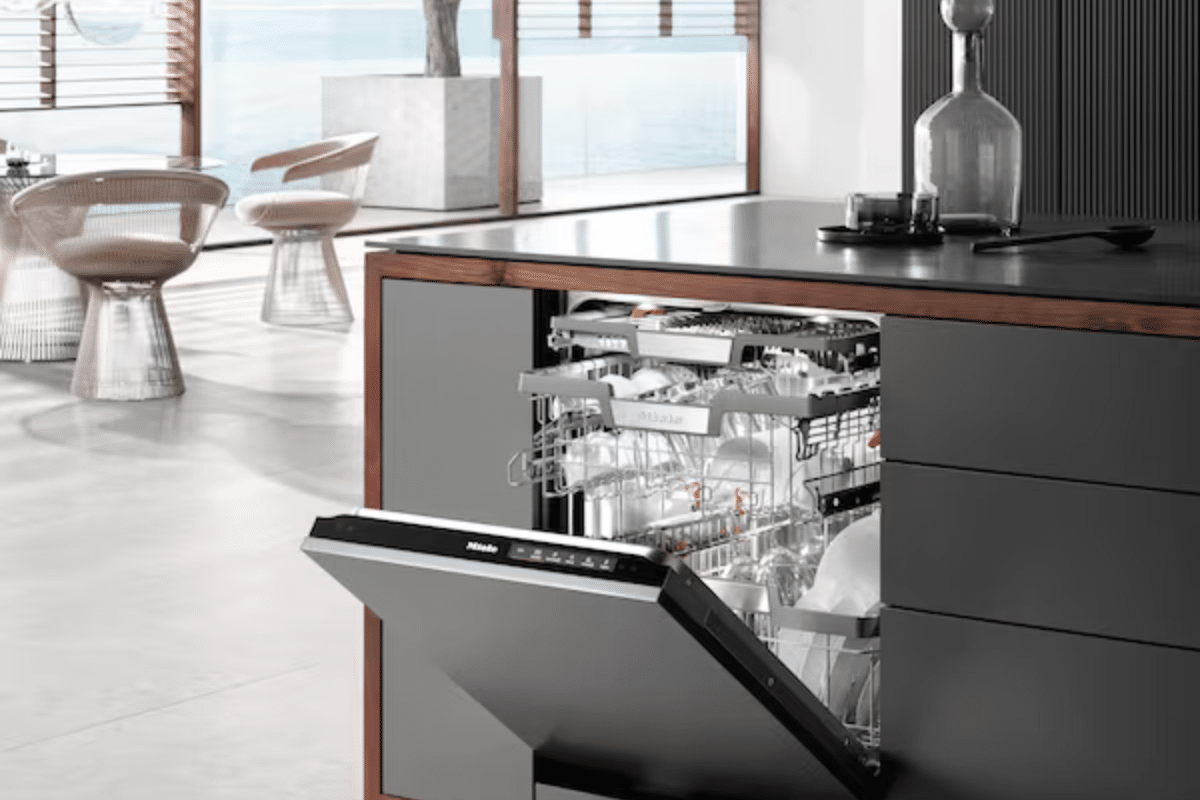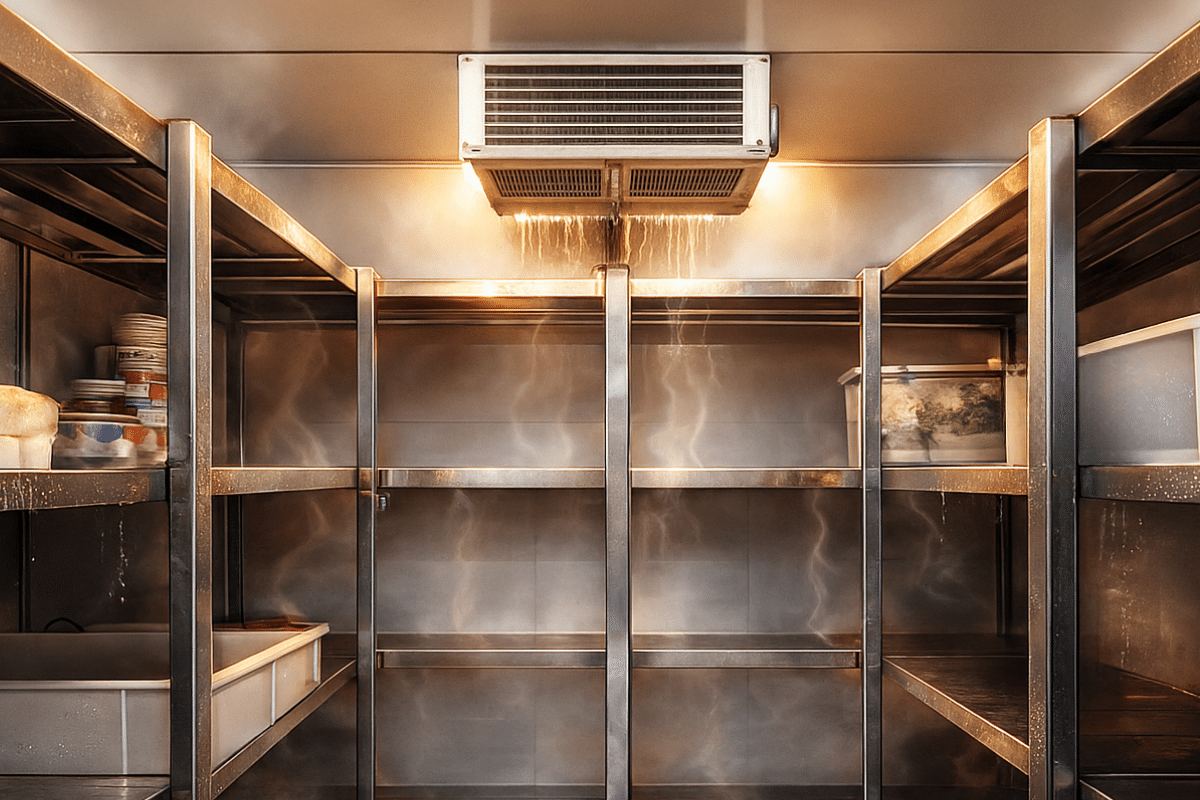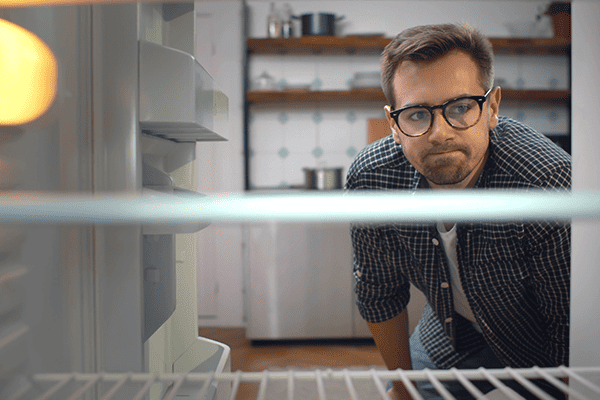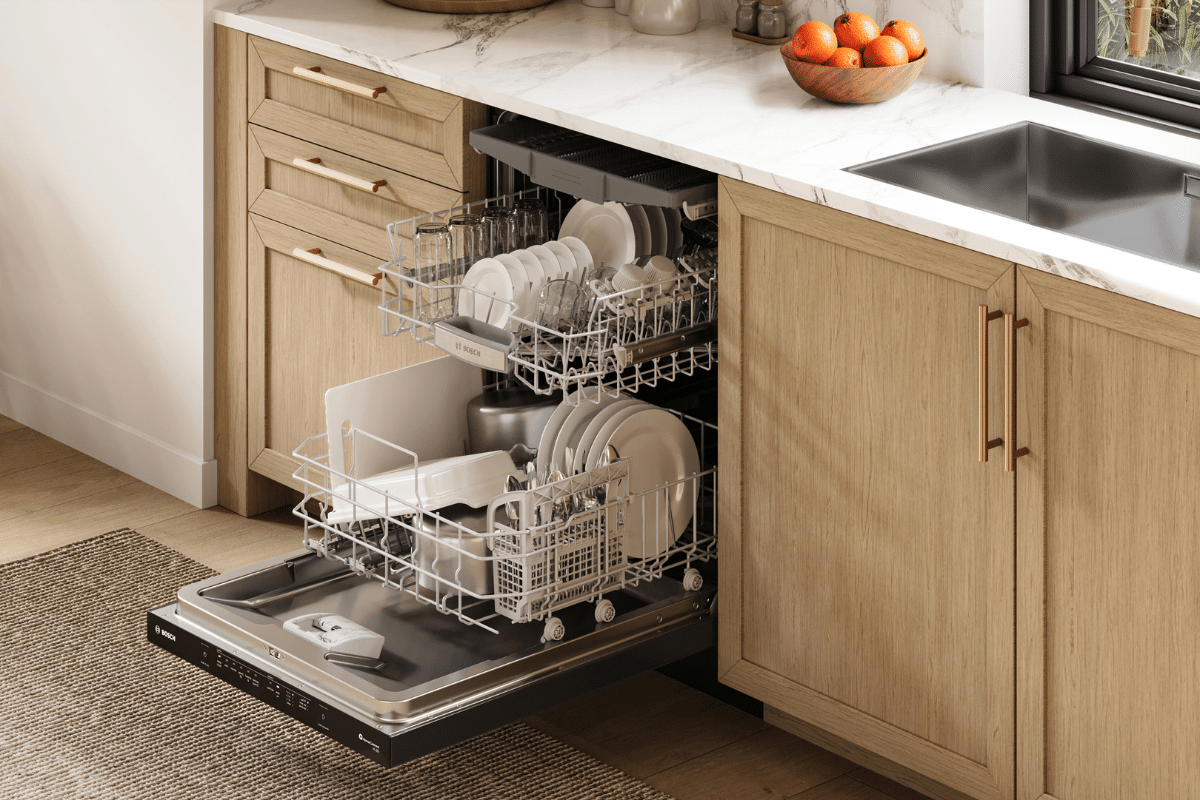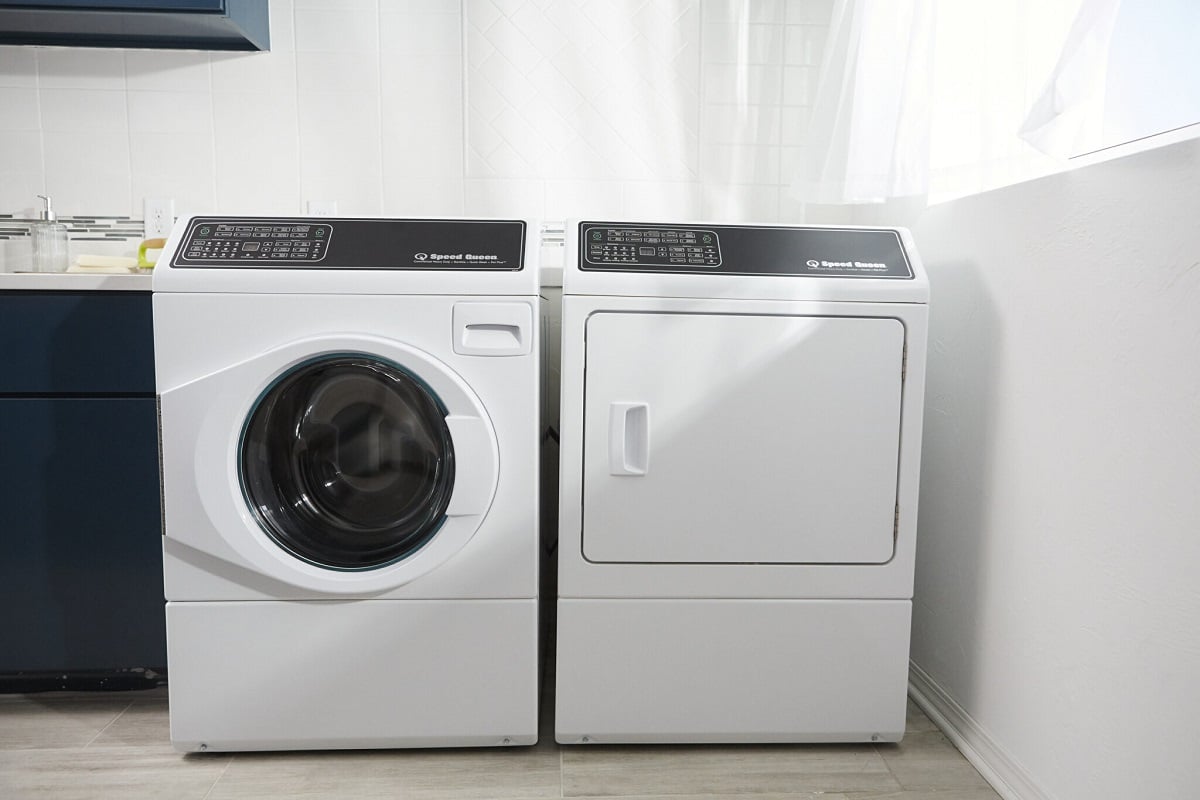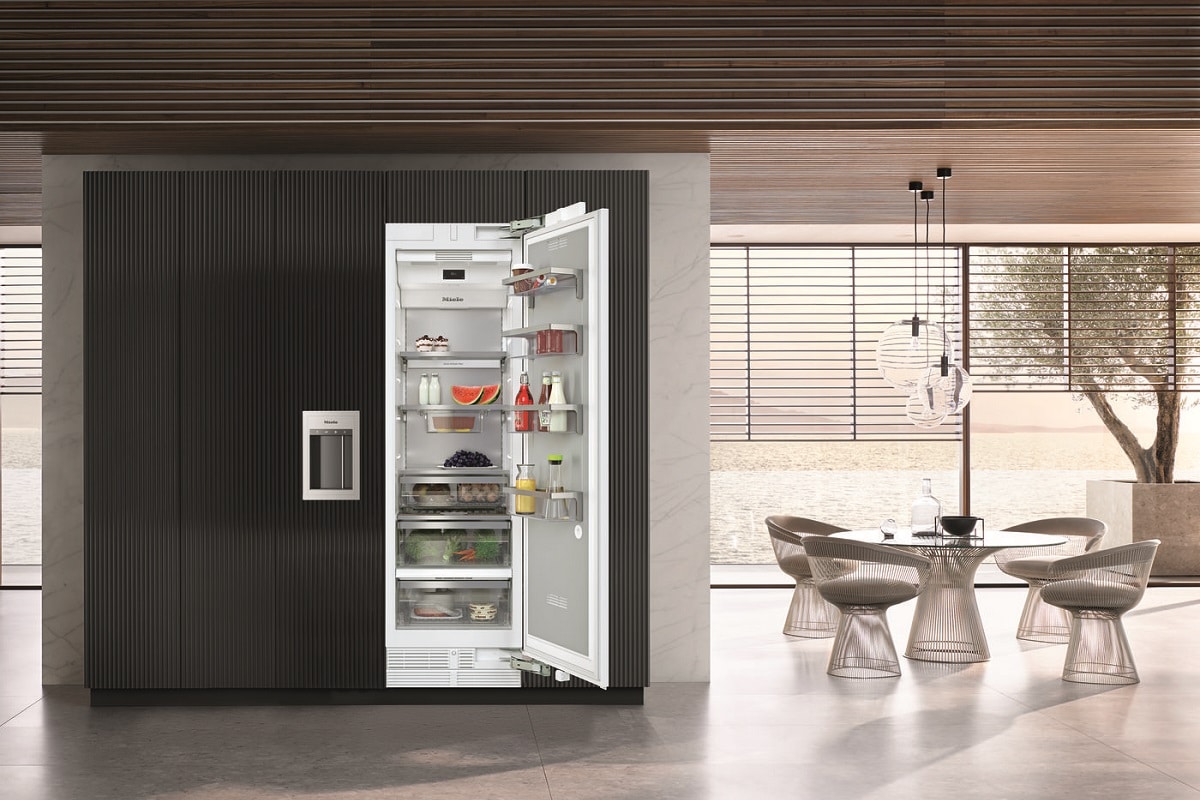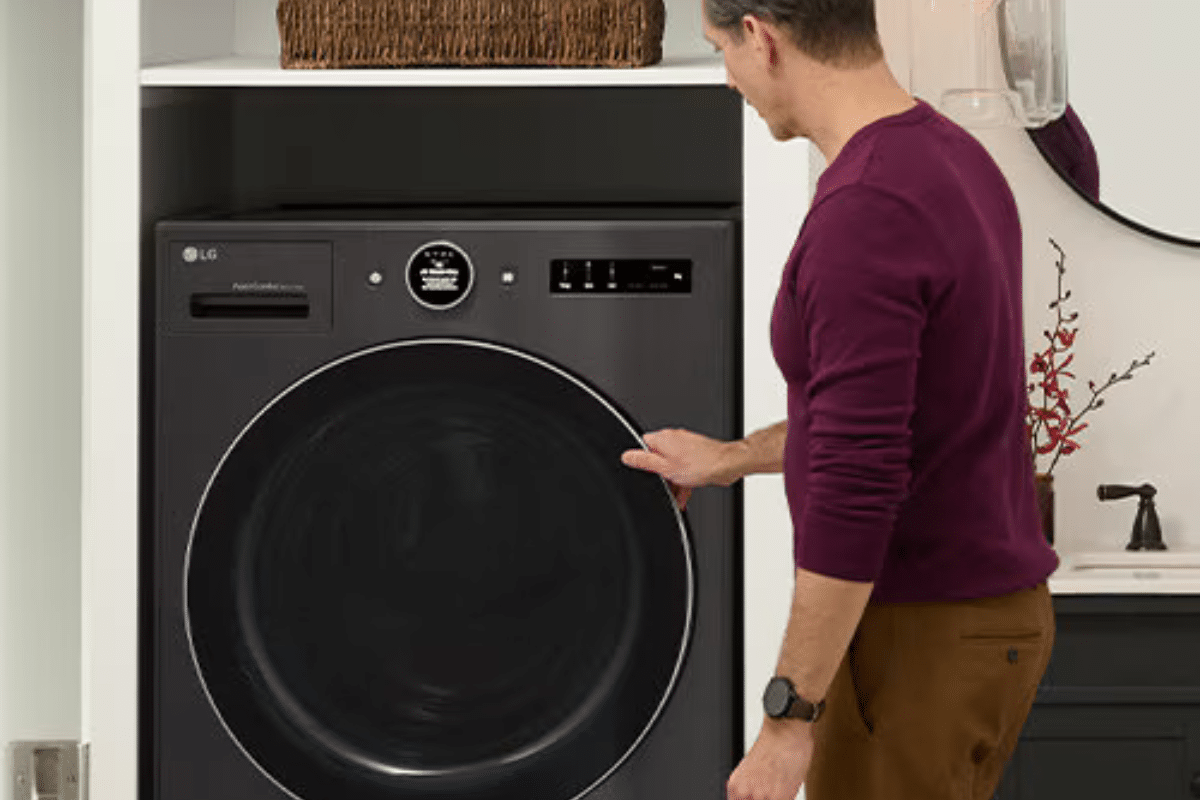A Miele dishwasher stinks when organic residue, grease, or biofilm accumulates in hidden areas of the appliance. This issue typically stems from infrequent cleaning, improper draining, or leftover moisture after cycles. Addressing the cause immediately prevents odors from worsening and helps maintain proper sanitation.
To eliminate odor effectively, it is necessary to clean every component that may trap debris. Filters, spray arms, and rubber seals are common odor sources. Understanding how to clean a Miele dishwasher will restore proper hygiene, reduce bacteria growth, and ensure the unit operates efficiently.
Follow These Steps When Your Miele Dishwasher Stinks
1. Remove and Clean the Filter
A clogged filter is one of the most common reasons a Miele dishwasher stinks after multiple wash cycles, and is generally the first step to take to clean a Miele dishwasher. Food particles, grease, and mineral deposits settle in the filter and cause bacteria growth over time. If the filter is not cleaned regularly, odor will spread to the entire dishwasher interior. Cleaning it thoroughly is the first step in odor removal.
Follow these steps to clean the filter:
- Open the dishwasher and locate the filter at the base.
The filter assembly is usually found beneath the lower rack and easily accessible. - Unlock and remove the filter assembly.
Turn it counterclockwise as instructed in the user manual to detach it safely. - Rinse it under warm running water to remove trapped food particles.
Avoid using harsh chemicals that may damage the mesh surface. - Use a soft brush with mild detergent to scrub away grease and residue.
Pay attention to edges and corners where buildup is more concentrated. - Reinstall the filter securely once fully cleaned.
Ensuring it is properly seated prevents leaks and maintains efficient drainage.
Once the filter is clean, odors caused by trapped food will be significantly reduced. If the smell persists, move to the next step.
2. Clean the Spray Arms
When a Miele dishwasher stinks, clogged spray arms are often another contributing factor. Over time, food debris and mineral deposits block the spray nozzles, preventing proper water circulation. This not only affects cleaning performance but also allows trapped residue to develop bacteria and odor. Removing and cleaning the spray arms ensures water flows correctly and helps prevent recurring smells.
Follow these steps to clean the spray arms:
- Detach the upper and lower spray arms according to the manufacturer’s manual.
Check the locking mechanism to avoid damaging any components during removal. - Inspect spray holes for blockages caused by mineral deposits or food debris.
Hold the spray arm under bright light to see any obstructed holes. - Use a toothpick or fine brush to clear each nozzle.
Gently loosen debris without scratching the plastic material. - Rinse thoroughly with warm water before reattaching.
Ensure all nozzles are free from buildup to maintain proper spray pressure.
Once the spray arms are clean, they will function properly, ensuring better wash results and reduced odor.
3. Wipe Down the Interior Surfaces
Residual moisture and grease on interior surfaces are another reason a Miele dishwasher stinks after repeated cycles. Rubber gaskets, door seals, and hidden corners often harbor bacteria and mold growth. Regularly wiping these surfaces eliminates hidden debris and prevents bacteria from spreading. A thorough cleaning of all interior surfaces is essential for odor control.
Follow these steps to clean the interior:
- Dampen a microfiber cloth with a mixture of warm water and mild soap.
Avoid harsh chemicals that may damage interior coatings. - Wipe the interior walls, door gasket, and detergent dispenser.
Pay close attention to the folds of the rubber seal where debris tends to collect. - Inspect crevices where moisture and residue accumulate.
Use a soft brush for hard-to-reach areas around hinges and corners. - Dry all surfaces with a clean cloth to prevent moisture retention.
This step minimizes mold growth between wash cycles.
Once the interior is wiped thoroughly, odors from hidden bacteria are significantly reduced.
Step 4: Run a Cleaning Cycle
Even after manual cleaning, internal components may still harbor bacteria that cause odor. Running a dedicated cleaning cycle removes any lingering biofilm in areas you cannot reach manually. This step also helps maintain the dishwasher’s performance. Using vinegar and baking soda is an effective method for neutralizing odor naturally.
Follow these steps to run a cleaning cycle:
- Place a dishwasher-safe cup filled with white vinegar on the top rack.
Vinegar breaks down grease and dissolves mineral deposits. - Run a hot water cycle without detergent or dishes.
This allows the vinegar to circulate and sanitize the interior. - After completion, sprinkle baking soda along the base of the tub.
Baking soda helps absorb odors and freshens the interior. - Run a short cycle to neutralize any remaining smell.
Avoid using detergent during this step to allow the baking soda to work effectively.
After running this cycle, any remaining Miele dishwasher odor should be significantly reduced.
Step 5: Maintain Proper Ventilation and Routine Cleaning
Long-term odor prevention requires routine cleaning and proper ventilation after each cycle. Leaving the door slightly open helps reduce moisture buildup, which is the primary cause of bacteria growth. Following these preventive measures ensures your dishwasher remains odor-free and efficient over time.
Follow these maintenance steps:
- Leave the dishwasher door slightly open after each cycle.
This allows airflow to dry out remaining moisture. - Clean the filter and interior monthly to prevent odor buildup.
Regular cleaning eliminates food particles before they start decomposing. - Use Miele’s recommended cleaning agents periodically.
Specialized cleaners maintain internal components without damage.
With consistent maintenance, your dishwasher will remain hygienic and free from unwanted smells.
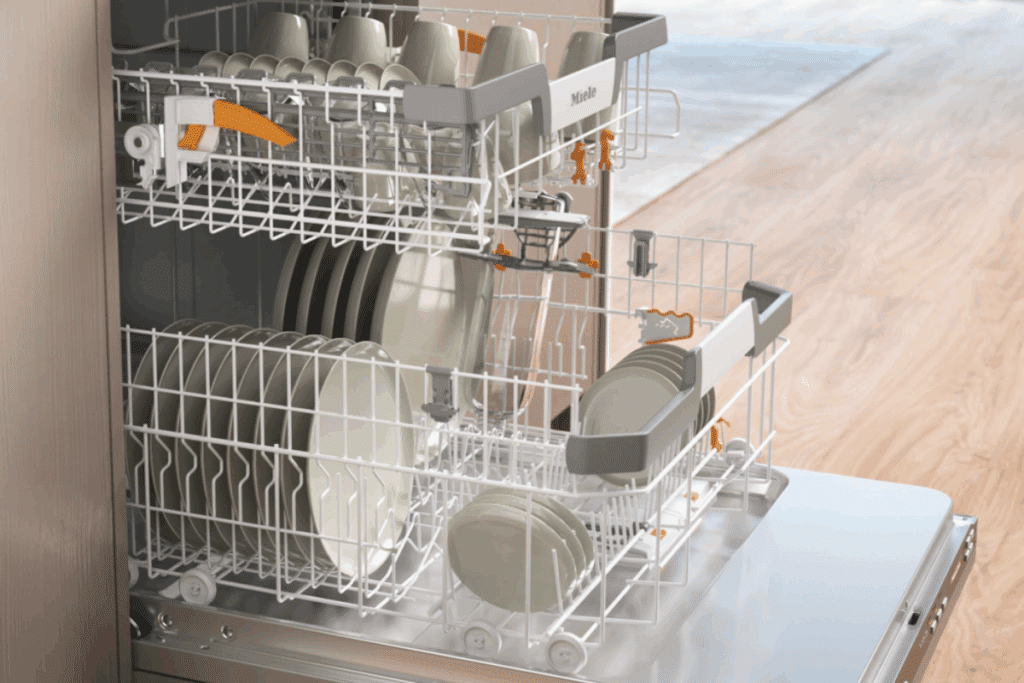
Miele Dishwasher Odor FAQs
Why does my Miele dishwasher smell even after cleaning?
Residual moisture and hidden biofilm can cause lingering smells. Inspect seals, hidden compartments, and the drain hose for trapped debris.
Can a blocked drain cause a Miele dishwasher odor?
Yes, a clogged drain can cause stagnant water and bacterial growth. Ensure the drain hose is clear and the filter is properly cleaned.
How often should I clean a Miele dishwasher?
Filters should be cleaned weekly, while a full interior cleaning should be performed monthly to prevent buildup.
When should I call a professional for persistent odor?
If smells remain after thorough cleaning, internal parts like the circulation pump or drain system may require service.
To prevent future odors, always scrape large food particles from dishes before loading them. Regularly run a high-temperature wash cycle to reduce grease buildup. Using a dishwasher-specific cleaner once a month keeps hidden components sanitary. Consistent maintenance not only eliminates odor but also extends the appliance’s lifespan.
If your Miele dishwasher smells despite thorough cleaning, internal parts may need professional servicing. When odors indicate a deeper mechanical issue, scheduling service with a qualified dishwasher repair technician in Spring Valley is recommended.


